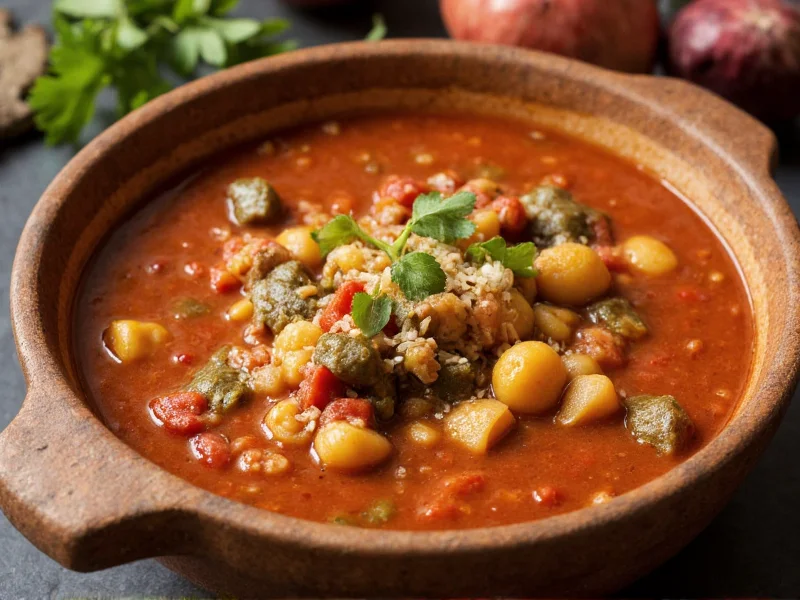Gumbo stands as Louisiana's most celebrated culinary creation, blending West African, French, Spanish, and Native American influences into one deeply flavorful stew. Understanding what's in gumbo soup requires examining its foundational elements that create this distinctive dish enjoyed worldwide.
The Holy Trinity: Vegetable Base
No discussion about what ingredients are in traditional gumbo can begin without mentioning the holy trinity—equal parts diced onions, celery, and green bell peppers. This aromatic foundation differs from the French mirepoix (which uses carrots) and forms the flavor backbone of authentic Cajun and Creole cooking. The vegetables should be finely diced to distribute flavor evenly throughout the soup.
The Roux: Flavor and Thickening Agent
The roux represents gumbo's soul, created by slowly cooking equal parts flour and fat (typically oil or butter) until reaching the desired color. Three roux types exist:
| Roux Type | Cooking Time | Color | Best For |
|---|---|---|---|
| Blond roux | 5-10 minutes | Pale golden | Chicken gumbo |
| Brown roux | 15-20 minutes | Light brown | Seafood gumbo |
| Dark roux | 30-45 minutes | Chocolate brown | Cajun sausage gumbo |
Dark roux develops complex nutty flavors but provides less thickening power than lighter versions. Many home cooks ask what gives gumbo its rich color and depth—this slow-cooked roux delivers both.
Protein Components
What type of meat is in gumbo varies by regional tradition and family preference:
- Chicken and Andouille: The most common combination featuring smoked sausage and chicken thighs
- Seafood: Shrimp, crab, and sometimes oysters in coastal Creole versions
- Duck or game: Traditional in rural Cajun country
- Ham or tasso: Smoked ham hocks or spicy cured ham add depth
Many authentic recipes use multiple proteins for layered flavor. The meat should be browned before adding to develop additional flavor complexity through the Maillard reaction.
Thickening Agents
What makes gumbo different from other soups lies partly in its thickening methods. While the roux provides initial thickness, traditional gumbo uses one or both of these additional thickeners:
- Okra: Sliced or whole okra pods release mucilage when cooked, creating a silky texture. West African in origin, it's essential in some traditional recipes.
- Filé powder: Ground sassafras leaves added at the table, contributing earthy flavor and additional thickness. This Native American contribution should never be boiled, as it becomes stringy.
Seasonings and Flavor Builders
The distinctive gumbo flavor profile comes from a carefully balanced spice blend. Essential seasonings include:
- Fresh garlic (always added after the holy trinity)
- Bay leaves (removed before serving)
- Dried thyme and oregano
- Cayenne pepper (amount varies by heat preference)
- Black pepper (freshly ground preferred)
- Worcestershire sauce (for umami)
- Hot sauce (like Crystal or Tabasco, added at table)
Cajun versions typically omit tomatoes, while Creole gumbo often includes them. This represents the primary difference between Cajun and Creole gumbo that many home cooks wonder about.
Regional Variations
What's in gumbo soup varies across Louisiana's regions:
- New Orleans (Creole): Often includes tomatoes, seafood, and a lighter roux
- Rural South Louisiana (Cajun): Typically tomato-free with darker roux and game meats
- Coastal areas: Feature abundant seafood like shrimp, crab, and oysters
- North Louisiana: May include chicken and sausage with a medium-dark roux
Serving Tradition
Authentic gumbo is always served over steamed white rice, never as a standalone soup. The rice absorbs the rich broth while providing a neutral base for the complex flavors. Many families serve gumbo with crusty French bread and a side of potato salad—a traditional Louisiana pairing that surprises outsiders but balances the dish's richness.
Modern Adaptations
Contemporary cooks sometimes ask what can be substituted in gumbo for dietary needs. While purists might object, acceptable adaptations include:
- Vegetable gumbo using mushrooms and eggplant as meat substitutes
- Gluten-free roux made with rice flour
- Low-sodium versions using homemade stock
However, the essential holy trinity, roux, and proper seasoning remain non-negotiable for authentic flavor.
FAQs About Gumbo Ingredients
What is the difference between gumbo and other soups?
Gumbo differs from other soups through its essential trinity of components: a carefully made roux, the holy trinity vegetable base, and specific thickening methods (okra or filé powder). Unlike most soups, gumbo is always served over rice and features a complex layering of flavors developed through multiple cooking stages.
Why is my gumbo not thickening properly?
Gumbo thickness depends on multiple factors: the roux color (darker roux has less thickening power), proper reduction during simmering, and whether you've added okra or filé powder. If your gumbo remains thin, try simmering uncovered for 20-30 minutes to reduce the liquid, or add a small amount of okra during cooking. Remember that gumbo always thickens slightly as it cools.
Can I make gumbo without sausage?
Yes, you can make gumbo without sausage. Traditional seafood gumbo contains no sausage, while chicken gumbo often uses tasso ham instead. For vegetarian versions, mushrooms and eggplant provide satisfying texture and umami. The essential elements are the roux, holy trinity, and proper seasoning—protein choices can be adapted to dietary preferences while maintaining authentic gumbo character.
What gives gumbo its distinctive flavor?
Gumbo's distinctive flavor comes from multiple sources: the carefully cooked roux (which can range from nutty to deeply caramelized), the aromatic holy trinity vegetables, the layered proteins, and the balanced spice profile. The slow development of flavors through proper technique—particularly the roux preparation and gradual addition of ingredients—creates the complex taste that defines authentic gumbo.











 浙公网安备
33010002000092号
浙公网安备
33010002000092号 浙B2-20120091-4
浙B2-20120091-4